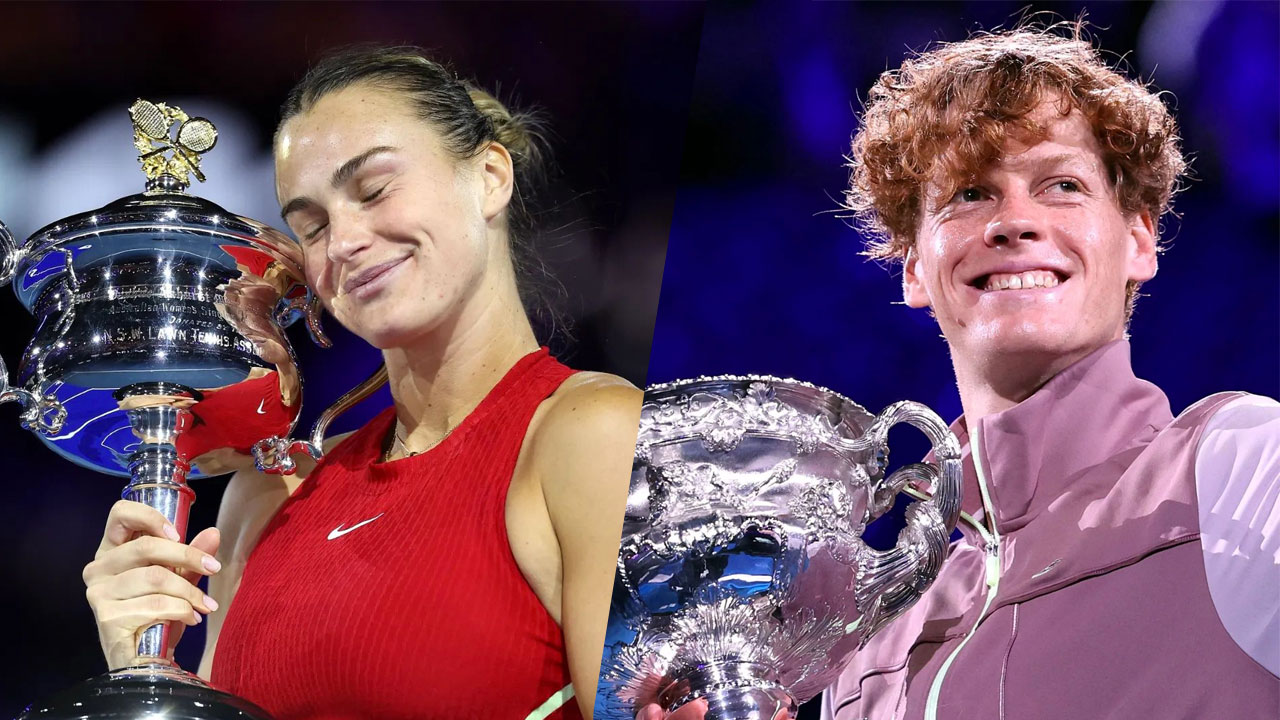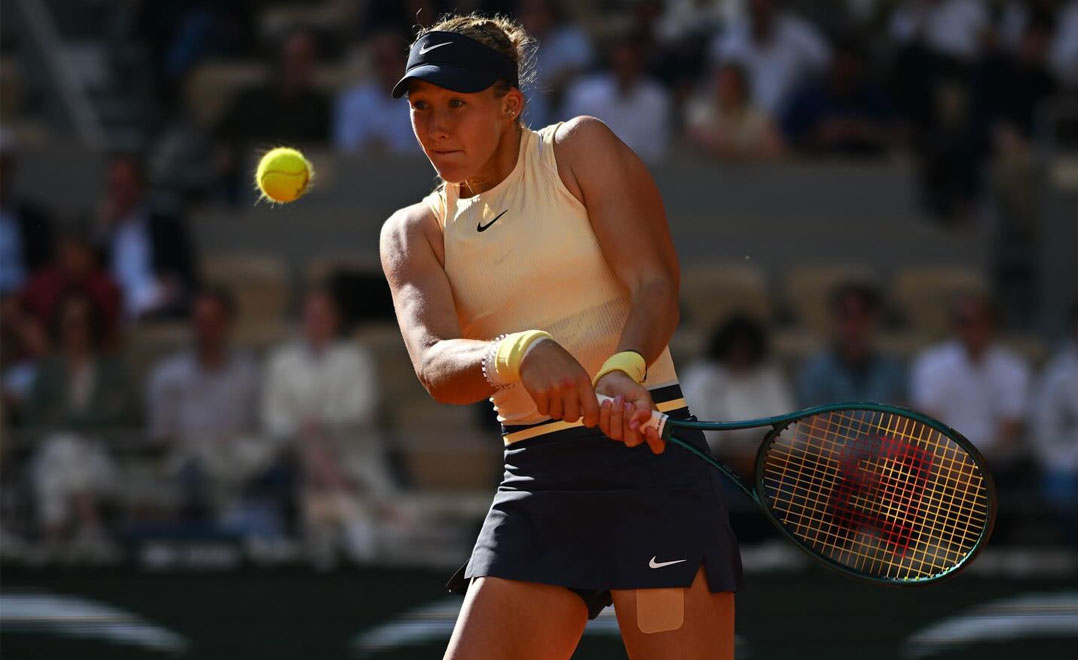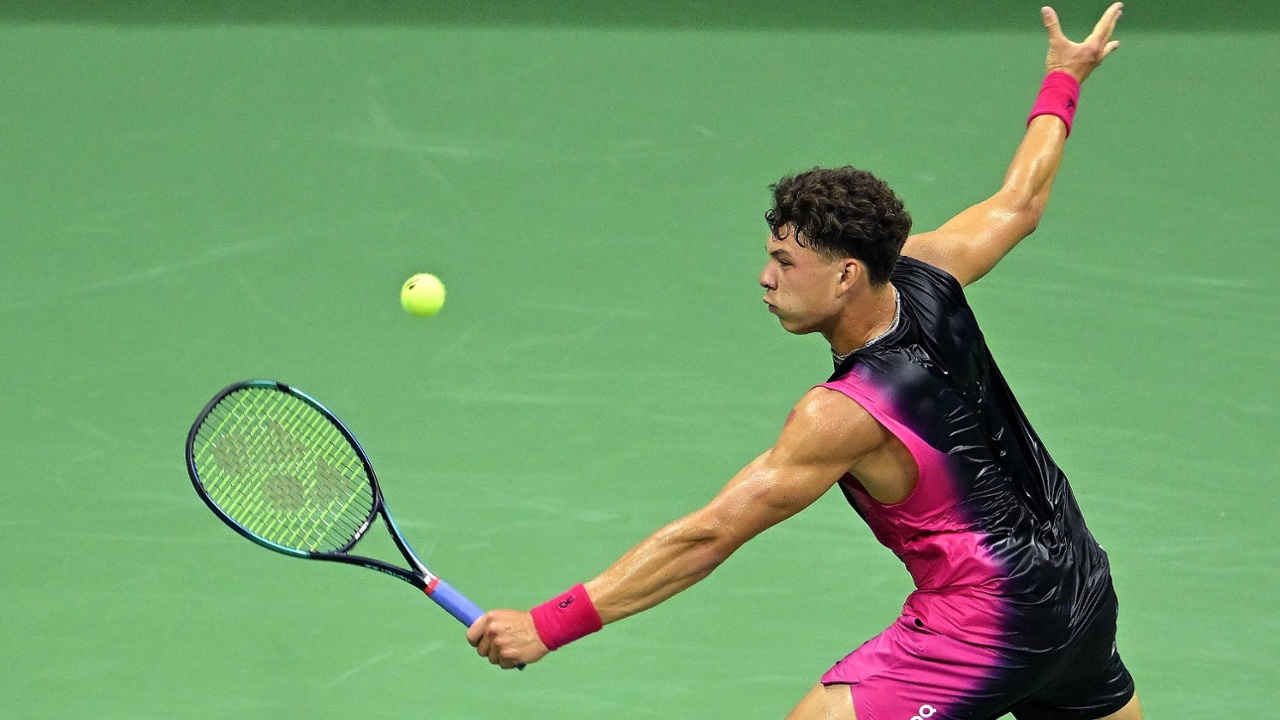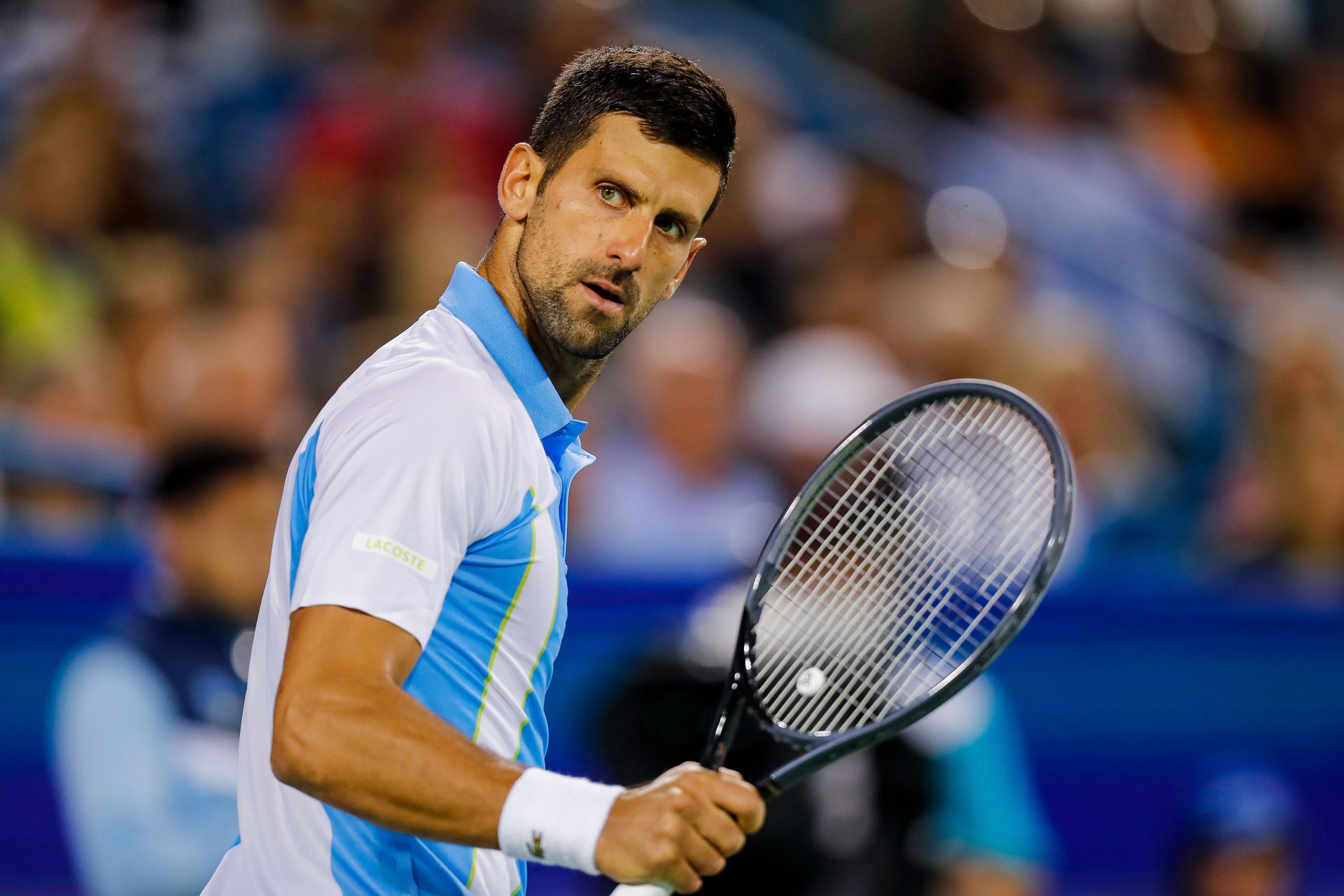The Australian Open arrives each January awash in vibrant colors, basking in largely fantastic weather and chock-full of boisterous, happy-go-lucky fans.
The players suit up after a short offseason feeling refreshed and carrying a clean slate into the new year.
It’s the Happy Slam—the perfect way to kick off the tennis season.
The storylines for the year ahead begin here. Only one player will have a chance to win a calendar slam. To do that, you have to win Australia.
Novak Djokovic has managed to give himself that opportunity ten times. He is open about his desire to win the calendar slam, and the odds were good he would be making another run at it this year.
2024 won’t be his year, though.
Just like that, his annual goal is gone before even sniffing February.
At age 36, he doesn’t have many more chances, and the task will only grow more difficult with each passing year. He’ll have to try again when he’s 37.
Unfortunately for Novak, there’s a new obstacle in his path. A sly fox has emerged from the brush…
Jannik Sinner Puts Tour on Notice
Every major reveals a gradual story over two weeks for the ultimate champion. A story of “how” the champion won it.
Jannik Sinner’s story had a twist ending.
For six matches, his tale was about outright dominance. Then, at the very end, it was about coming back from the brink.
Sinner only dropped one set on the way to the final. Through six matches, no one in the field sniffed a chance at beating him. Not even Djokovic in the semis, who was the first man to claim a set. But one thing he never claimed was a break point opportunity. Zero.
The best returner the game has ever seen didn’t generate a single break point opportunity against Sinner in four sets of tennis. That is not some weird side-stat. It’s a big, red alert, flag-waving, holy smokes this guy is good stat.
But let’s look deeper. Before dropping serve in his second service game against Medvedev, Sinner had held serve 45 consecutive games, dating back to the second round. Five matches, zero breaks.
He did not even face a break point in 25 games prior to that Medvedev break.
That’s running roughshod over the field.
That’s what Roger Federer used to do. It’s what Rafa used to do. Ordinary players don’t do that.
Then he met Daniil Medvedev.
Embed from Getty ImagesMedvedev came out guns a’ blazing. His game plan was brilliant: be aggressive, end points early, don’t let Sinner get rhythm. He returned serve from closer to the baseline and took time away from Sinner. And he was executing. Everything he aimed to do, he did. He was on fire.
The dividends came quickly. He broke Sinner’s unbreakable serve in the third game of the match, then for a second time to close out the first set 6-3 in a half-hour flash of “what just happened?” brilliance.
Notably, Sinner never looked unnerved by the heft of being in his first Grand Slam final. He looked calm and relaxed, as if this were just another match. The moment did not affect him. Situational compartmentalization is another sign of greatness.
But he was shellshocked by Medvedev’s play. He hadn’t been in this situation all tournament. He wasn’t playing bad, either. Medvedev was redlining and Sinner simply couldn’t find any answers.
In the first game of the second set, Sinner missed a backhand passing shot (forced). He threw his hands up and looked at his box in confused disbelief. He normally doesn’t betray his inner dialogue, so to see him emote like that is a sign of real anguish.
Medvedev stayed on the gas, and before long, Sinner was down two breaks in the second set, 5-1. The fox was snookered.
Embed from Getty ImagesIt was Medvedev’s day. The story of this final so far was Medvedev’s utter unwillingness to lose his fifth out of six Grand Slam finals appearances. No. Not gonna lose his third Australian Open final, either. No way.
He came to win, and he meant business today. No antics or chicanery—only the best tennis he could summon. His real weapon of choice was his mind. His strength of attitude. His decision to win this time, dammit.
And so he spent two sets unloading ridiculous shots all over the court. Down the line, cross court, ace after ace, winner after winner. The octopus was bigger and more fearsome today.
Then the match turned, but you had to be paying attention to see it.
Serving for the second set at 5-1, a tiny thread in Medvedev’s story unraveled. He played an average game. Sinner also played an average game. Average vs. average gave the advantage to Sinner, and Sinner earned his first break point opportunity of the entire match. He converted it. 5-2.
Okay, it was a bit of a throwaway game. 5-1 is insurmountable. The set would still go to Medvedev, right?
Sinner held to 5-3.
Then he opened a 0-30 window on Medvedev’s service game. But Medvedev reversed it to 40-30, set point. Double fault. The first sign of nerves. Deuce.
Now Sinner gets a break point chance. He came within a single point of drawing even in the set after being down 6-3 5-1 and dropping serve four times in two sets. He netted a forehand, though, and Medvedev would win the next two points and the set.
But the deed was done. Sinner winning that 5-1 game was the moment he found a spark of belief. It never went away after that.
Tennis matches turn in funny places. Spectators don’t always see it. Players feel it, though. In their bones they know something changed.
Embed from Getty ImagesIn set three, Medvedev reverted to his normal play style. Suddenly he opted for long grueling points and significantly less aggression. It didn’t work. Average vs. average favored Sinner again. Medvedev abandoned the high-octane tennis that saw him breeze through the first two sets. Why? Because he’s human and this is a hard sport.
Sinner did what he needed to do. He held on for dear life. He held and held and held until Medvedev served at 4-5. Then Sinner turned the dial up a half degree and stole the third set in the blink of an eye.
Set four was a mirror image of set three. Read the last two paragraphs again. Same thing.
By set five Medvedev was gassed. All of his five-setters this fortnight caught up to him (four total). Sinner, meanwhile, was fresh as a daisy. His utter lack of extended matches was now a major advantage deep into this match.
That may be why Medvedev played aggressive early. He may have known he’d fade late, so his best strategy would be to try to make it a quick, heavily offensive match. It worked…almost.
Then, at 3-2 in the fifth, Sinner’s fresh legs finally gave him the upper hand for good. He broke Medvedev’s serve for the third and final time. Medvedev didn’t play a poor game. He fought hard. He just got bested for a few points, and that was that. Sinner would hold two more times to take the title.
Final score: 3-6, 3-6, 6-4, 6-4, 6-3.
Medvedev, God bless him, never wavered. He played hard until the very end. He played like Rafa. He tracked down every ball, competed for every point, and summoned every drop of sweat. He left it all out on the court.
Embed from Getty ImagesIt was his mantra for the entire tournament. To be proud of himself and the way he played. “If I lose this match, then I want to be proud of myself,” he said after besting Zverev in the semis by making his own two-set comeback. “If I lose, I lose, but I won so I am very proud.”
All tournament long, he refused to lose because he didn’t give it his all. That mindset brought him oh-so-close to the trophy.
It’s the most critical mental unlock in tennis. Deciding to leave your soul on the court is what comforts your soul in defeat. You do not question why you lost when you do that. You know why you lost. You lost because your opponent was better that day. Plain and simple. You didn’t beat yourself—an unforgivable sin in tennis. Those losses are the ones that sting most because they come with regret.
Medvedev is 27 years old. He knows that truth because he has suffered from it earlier in his career. Older now, with the added perspective of marriage and fatherhood, he gets it.
This loss will be disappointing for him…very disappointing. But he won’t berate himself for it. He’ll be proud. And he’ll be back to win more.
But today was Sinner’s day. He’s a 22-year-old who plays like he’s 30. His maturity isn’t coached, it’s just who he is. He’s steady. He’s quiet. He’s level-headed. He doesn’t get too high or too low. He knows he’s good in a non-arrogant way.
He’s nice, too. Christopher Eubanks explained that Sinner is one of the nicest, most well-liked players in the locker room. He’s nice to all the other players, the staff, the physios, opposing teams, the volunteers, tournament officials, cafeteria ladies, everyone. He’s just a nice guy.
A nice guy who can throttle forehands and backhands past you.
Embed from Getty ImagesThe ATP Tour is in Good Hands
Change is a funny thing. We think greatness disappears. It doesn’t. It transfers. It is passed on. The next generation becomes greater for having the current generation to learn from.
Jannik Sinner and Carlos Alcaraz are going to be the top dogs on the ATP Tour for the next fifteen years. Defeating either one of them is the new goal of everyone else on tour.
The fireworks will crescendo when those two begin regularly clashing in Grand Slam finals, which we haven’t seen yet but can’t be far off.
Novak Djokovic will remain the guy to beat for a few more years. He isn’t done winning and this is not his obituary, but taking the long view, it’s about Sinner and Alcaraz.
Holger Rune can join them and make it a trio, but he still has to figure out his weaponry. He needs to find a coach who can do for him what Darren Cahill has done for Sinner.
Meanwhile, the guys in their mid-twenties are getting a raw deal, sandwiched between these two generations. The Zverevs, Dmitrovs, Medvedevs and Tsitsipases of the world are stuck having to play between the greatest generation the sport has ever seen and what looks to be their generational offspring. And they were never afforded a gap between the two, either.
It’s too early to say just how great Alcaraz and Sinner will be, but they have a very long runway, and the Big 3 raised the bar so high that they’ll stay hungry for a long time.
Fresh storylines, rivalries, battles, victories, and heartbreaks are blossoming anew.
It’s springtime in tennis.
Sabalenka Doubles Up Down Under
Second-seeded Aryna Sabalenka sashayed through the locker room, trophy in hand, emanating pure joy after defending her Aussie Crown from 2023.
She won this title without dropping a set, including a straight-sets win against budding rival Coco Gauff. That semifinal victory checked off a to-do item for Sabalenka after losing to Gauff in the 2023 U.S. Open final. It’s rare to get an opportunity to avenge a Grand Slam loss in the very next event, but Sabalenka had the chance and got it done.
Her opponent in the final, (12) Qinwen Zheng, became a breakout star. Zheng is a bright young star who probably overachieved ahead of schedule here. But players break out when they break out, and Zheng will have a wee target on her back going forward. She’ll also have a No. 7 world ranking next to her name.
At 21 years old, she’s still a work in progress, and the tennis world has much to learn about her. Truth is, we haven’t seen much of her until this week, but we certainly will going forward. Expect more profiles, TV segments, match highlights, and player analysis about Zheng in the rest of this year’s big tournaments.
Zheng has a magnetic smile and will do well with fans and endorsements. She also has a penetrating first serve that will carry her through many matches. The thing that doomed her in these finals was her second serve.
That was the story of the match, really. Sabalenka did what she does…smash the cover off the ball every chance she gets, even if it isn’t the right play.
But Zheng double-faulted away too many games. Sabalenka accepted the gifts and cruised to the finish line. Those double faults can’t be chalked up entirely to first-time finalist nerves, either. Zheng led the tournament in double faults. It was a known issue coming into this match.
That means there’s plenty of room to make technical and mental improvements on that shot. Cut those double faults in half or better, and she’s gonna be a tough out.
For now, though, she’s been introduced and she’ll be fun to watch mature.
Speaking of fun, no one has more fun with post-match interviews than Sabalenka. She’s all goofball. After the traditional nod to her team, acknowledging that “without you I wouldn’t be able to achieve so much in this sport,” she flipped the script and roasted them instead: “without me you wouldn’t be as good as well.”
Later that night, after all the mandatory official photos and interviews, she cut a rug with her team and shared the celebration with the world.
Aryna Sabalenka just dropped her annual Australian Open celebratory TikTok 😭 pic.twitter.com/JRQlFoiwoI
— Bastien Fachan (@BastienFachan) January 27, 2024
Tennis is a fun sport. It’s great to see players enjoy it so much. Nothing life or death going on out there. Legacy, sure. But legacies are better when they’re fun.
On the court, Sabalenka always lets you know how she’s feeling from the very first point. The body language after every lost point is on full display. Slumped shoulders, rolling eyes, pursed lips, glances at her team. Lose a point, slouch. Win a point, scream. Lose a point, cock the hip out. Win a point, pump the fist. She’s not a big believer in poker faces.
But you know what? If it ain’t broke, don’t fix it. And it ain’t broke. It’s working, to the of tune two Grand Slam titles, so doctor’s orders are to stay the course. Tell us how you feel, Aryna.
The WTA Tour is in Good Hands
Aryna Sabalenka won’t reclaim the No. 1 ranking with this title, but she gave women’s tennis a major shot in the arm by winning a second major. For too long, women’s tennis has been a revolving door of one-time winners.
While that’s fun in its own way—you never know who might win, more trophies to go around, parity, etc.—the sport needs some players with deep resumes to provide gravitas. It’s important to have giants to slay.
Iga Swiatek and Sabalenka now sit at world Nos. 1 and 2, respectively, and now they are both multiple Slam winners. Elena Rybakina and Coco Gauff are nipping at their heels. If those two can claim a second major for themselves this year or next, we’ll have a legit Big 4 in women’s tennis.
Reflex Volleys
Two players proved that tennis is a lifelong sport and we’re never too old to achieve greatness. A big tip of the hat to Rohan Bopanna and Hsieh Su-Wei.
What Youth Movement?
In a rare win for Father Time, the Australian Open delivered the sport’s oldest No. 1 ranking in history.
Rohan Bopanna made it a two-fer: at age 43, he became the top-ranked doubles player on the ATP Tour (oldest ever) and also became the oldest man to win a Grand Slam men’s doubles title, pairing with Matthew Ebden to defeat Simone Bolelli and Andrea Vavassori in the finals.
For added astonishment, he did it without any cartilage in his knees.
But that’s not all…
Hsieh Goes Out on Top
38-year-old Hsieh Su-Wei announced at the beginning of the tournament that she would be retiring from singles competition at its end. So she decided to go out a winner…in doubles. A double doubles winner, actually.
Hsieh won both the Ladies’ and Mixed Doubles titles, partnering with Elise Mertens and Jan Zielinski, respectively.
Why win a single(s) trophy when you can win two doubles trophies instead? Hard to imagine a better way to end one half of a career. Enjoy the sunset, Hsieh.
Thanks, Australia
See you next year…



